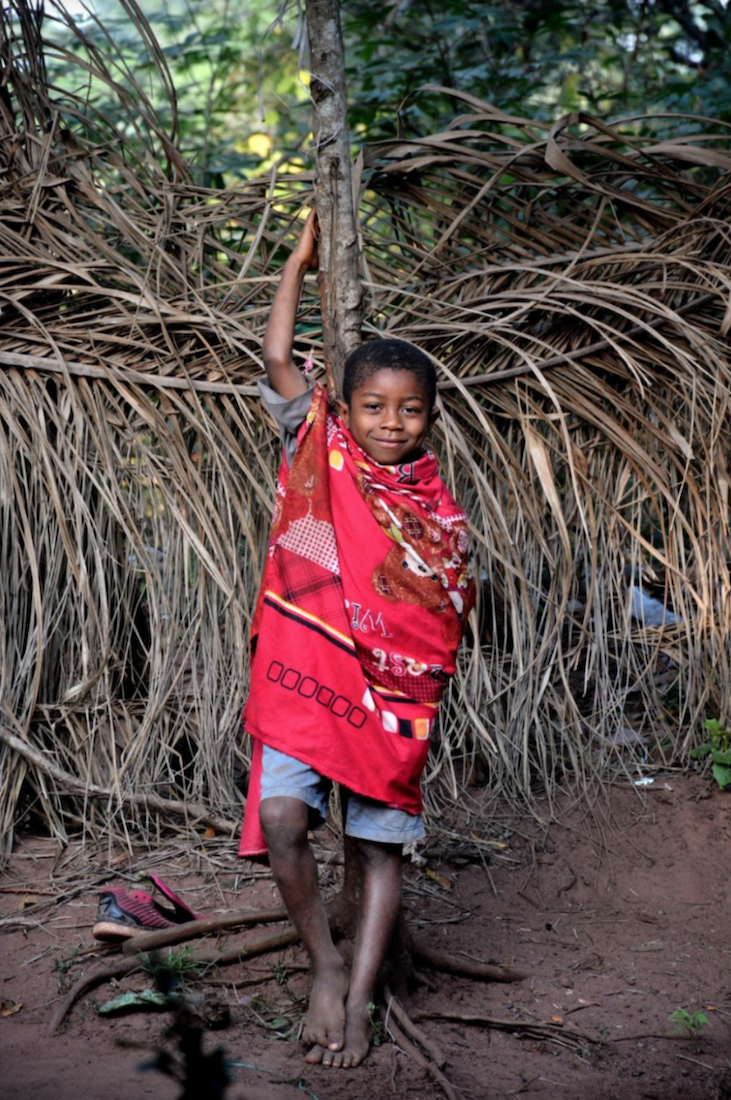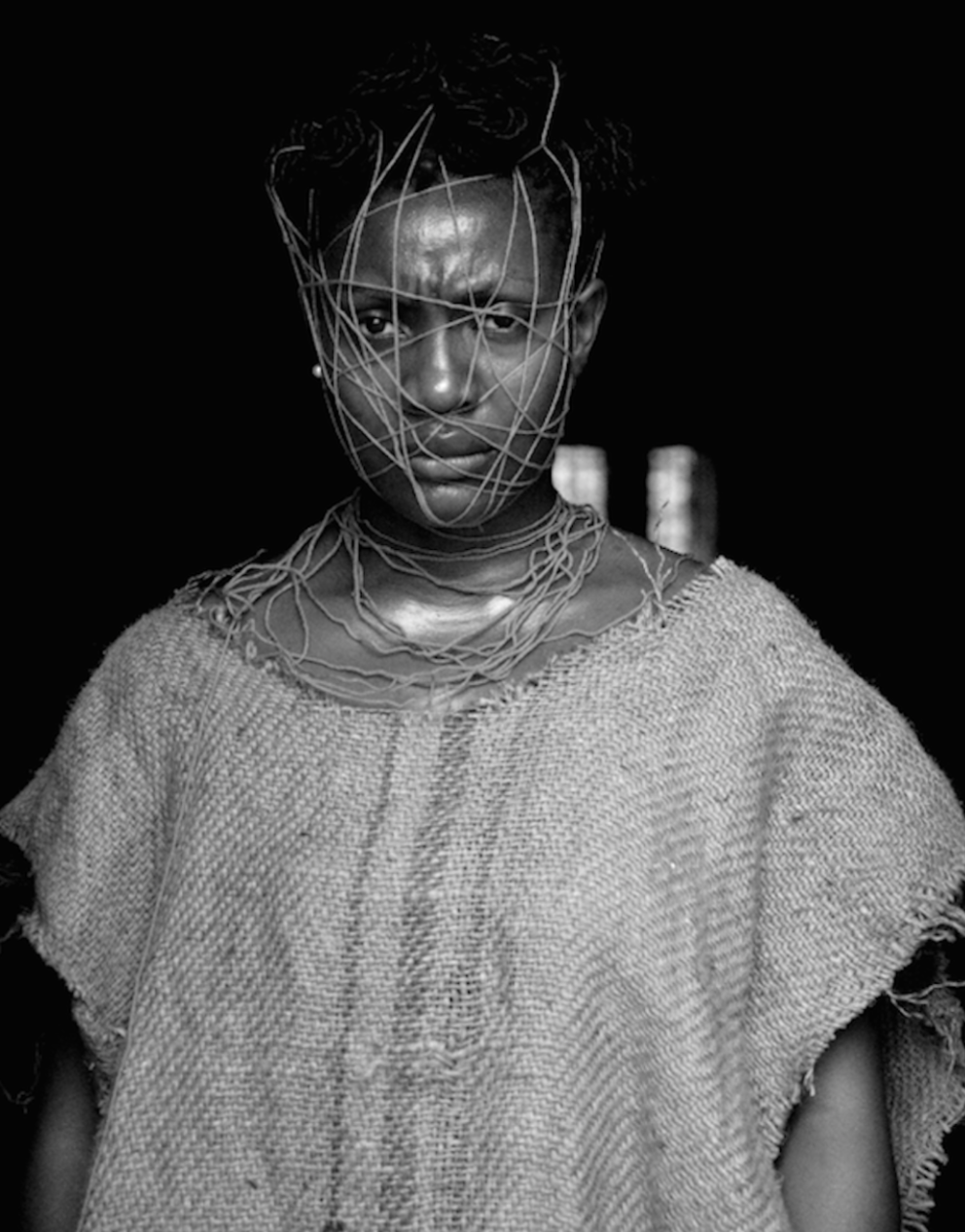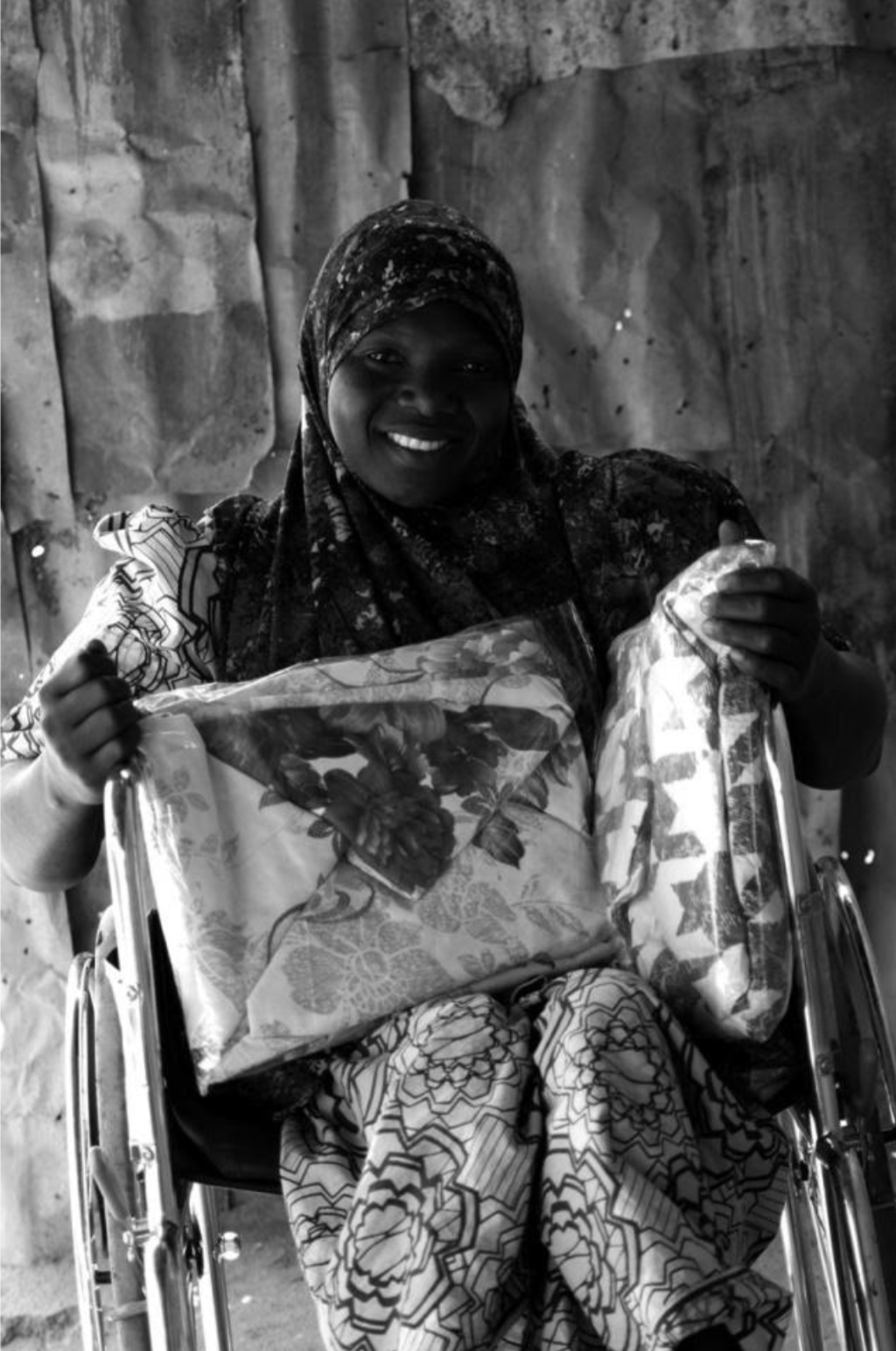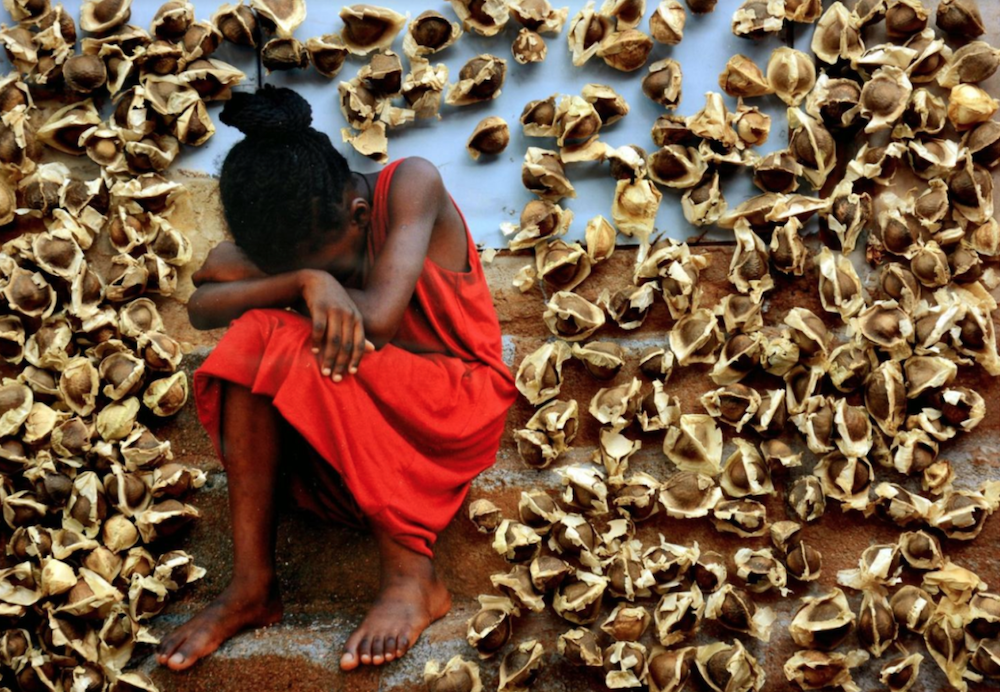‘Stay True’: The powerful works and words of Eze Mariagoretti Chinenye
EAS artist and writer Uji Venkat in conversation with Nigerian artist Eze Mariagoretti Chinenye.
Born and raised in the state of Enugu, she now resides in Abuja, Nigeria’s capital. Mariagoretti was the overall winner of the 11th Spanish Visual Art Competition in 2016 and Life in My City Arts Festival in 2012. She studied art at the Institute of Management and Technology to get her Higher National Diploma (HND) and is currently working on her masters' degree in Fine Art at the University of Nigeria, Nsukka.
Through collections of her photographs, Mariagoretti tells stories of how society and its surroundings affect individuals. In her work, 'Nobody Has to Know', she documents the isolation and trauma of child abuse. Upon first glance, an audience may only see the wounded figure cowering. However, in addition to the child depicted as a part of each piece, she envelops the subject with Moringa seeds which have curative powers.
You can see more images of her work on her website: http://ezemariagorettichinenye.visura.co/
How and when did you realize you wanted to be an artist?
As a child, my interest was mainly in drawing. I drew on walls, sandy grounds, and books. I realized I had to pursue my passion after secondary school because, while in school, I was always receiving gifts for being the “best student in fine arts.” I started to call myself an artist during my final undergraduate year. By that time, I was already so confident in my art practice.

I learned my basic [art] skills from school. I subscribed to some online photography newsletters, so I get mail from them, and I read them up. In my free time, I tried out my discoveries. I also studied some photographers whose styles appeal to me.
Are there any artists or people that inspired you to pursue your work in art?
As an undergraduate student, I was only focused on producing artworks which were basically my class assignments. Then, I was not bold enough to call myself an artist, and I was scared of art exhibitions. I had three lecturers: Dr. Okay Ikenegbu, Dr. Ayo Adewunmi, and Mr. Emeka Egwuibe who inspired me at that time. They encouraged me to start putting out my works for exhibitions. Finally, I summoned up the courage to enter an exhibition and surprisingly my work was sold. That was the first money I earned from my art, and that made me really happy.
You quote Chinua Achebe¹ in your Emergent Art Space portfolio profile excerpt. Does his writing have special significance to you?
Yes, it does, especially this: “art is man’s constant effort to create for himself a different order of reality from that which is given to him.” I like his concept for the definition of art.
Your photographs are so emotional, even though many don’t reveal details of the characters’ faces. The images shrouded in darkness, the postures, and the contortions are all so evocative. Where do you pull your inspiration from?

I get inspiration from my inner feelings and my environment. As an artist, I am interested in creating works that call for the participation of the audience to the same extent as my own involvement in the artwork. I love to create works with conceptual attributes. It contributes to the appreciation of my works. As every artwork is made in the context of a particular society, it thereby addresses the issues of that society.
What challenges did you encounter in your art and how did you overcome them?
First, by defining the area of photography that I want to be identified with and [figuring out how to create a unique path for myself. Knowing that my work will be perceived individually, I decided to bring conceptual qualities into my work. This helps to relate my intent to the viewer.
What was your experience with Emergent Art Space and being in the international exhibition 'Last Image Show' in Dar Es Salaam, Tanzania?
It was quite inspiring, seeing from different interpretations [of the theme of silence] from different perspectives and from different creative minds. It was an artists’ environment. To me, it was quite a good exposure [for my work] and getting to see what other artists, in other places, are doing. It was quite inspiring.

What are you working on now?
I am working on two projects right now, involving photography and photographic prints.
- Challenging Your Challenges
This series is an ongoing long-term project focused on people who are with a physical, sensory or developmental disability as a result of congenital defects, hereditary and environmental influences, accidents and diseases. The key concept of the project is to reshape the misconceptions and representation of disability in photography. It is about people that are pushing beyond limits. They have overcome self-pity and sympathy not minding their conditions.
- Nobody Has to Know
This work is a visual representation of the increasing number of child sexual assault in our society. This series calls attention to child molestation and the negative effect on the victim. Any child who is a victim of sexual abuse dies in silence, experiences emotional trauma, feels isolated and this makes the victim highly secretive and afraid to talk because of what the consequences might be--not being believed, punishment, blame or abandonment. This makes her lonely in her world. This abuse is usually accompanied by the threat “nobody should know.”
What advice do you have for other young artists?

Just one thing, to stay true to yourself. As an artist, you are being called. There is a divine cause that calls for your creation.
Research is very important. Be open to exploring technique, and medium, be determined, be patient, be authentic in your approach, and stay consistent in your practice; results are never instant.
¹ Chinua Achebe is a renown Nigerian writer, novelist and critic.
